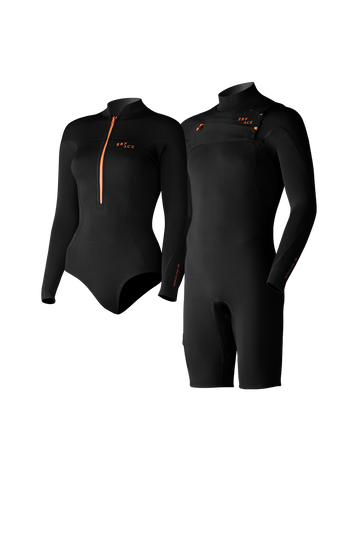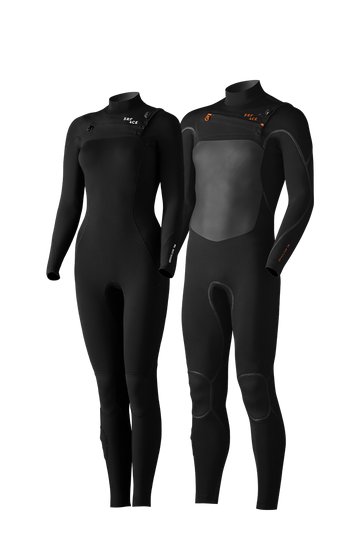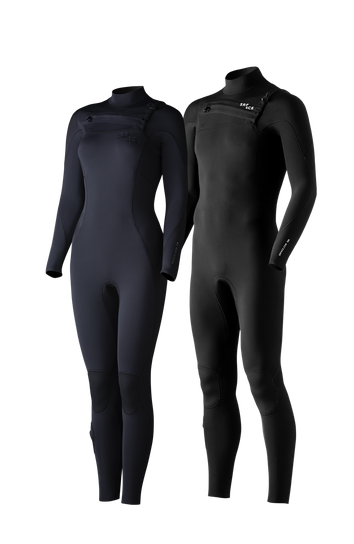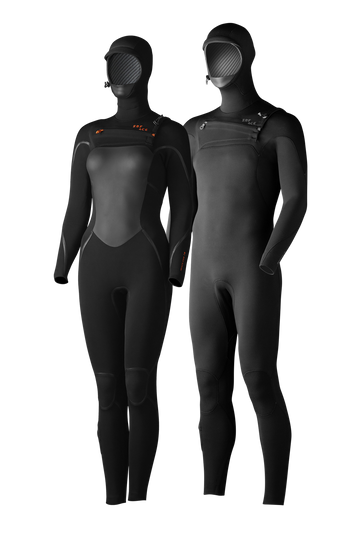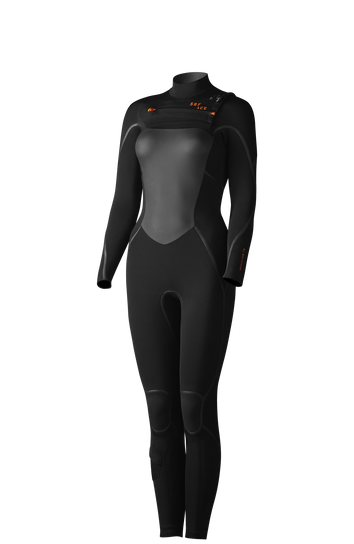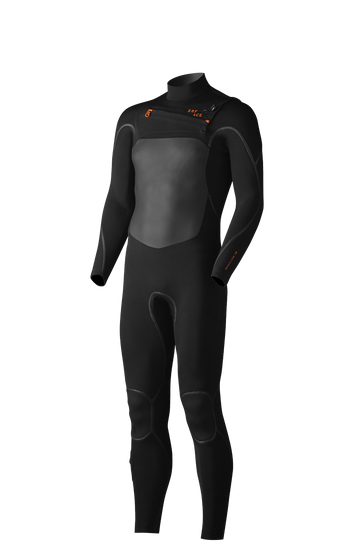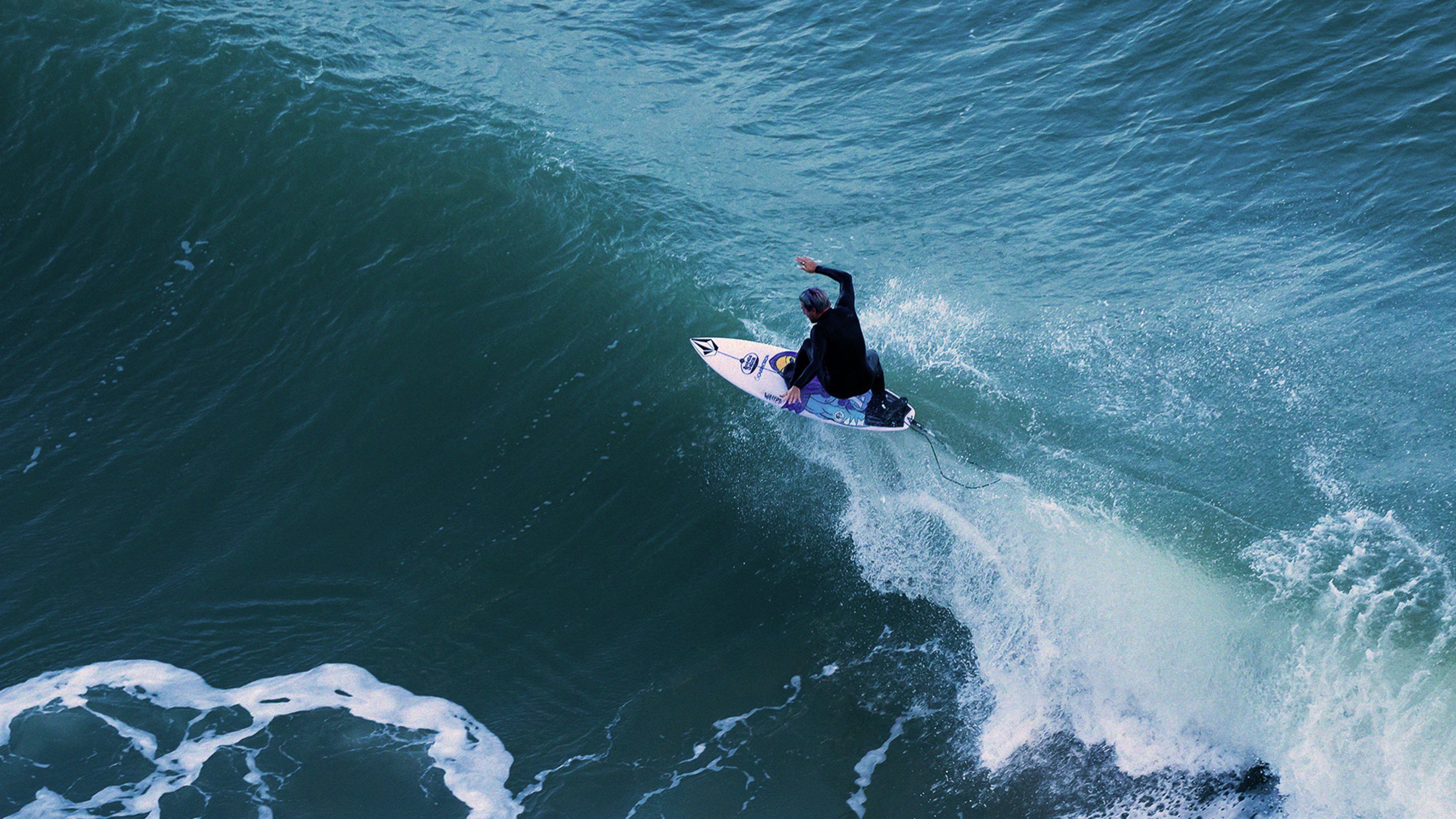
WHAT IS WETSUIT LINING?
Wetsuit lining is a thin layer of knitted fabric which we laminate onto neoprene wetsuit panels on either outside, inside or both sides. Some people think that ‘lining’ is just the fluffy quick-dry fabric on the inside of some high-end wetsuits. However, there is more to the story. After we slice a neoprene foam sheet into the required thickness, we put it through a lamination roller machine and we apply a thin layer of glue. Immediately after, we apply a knitted lining on top of the neoprene foam and press it together between the lamination rollers. Neoprene itself is very fragile, so it needs lining as reinforcement or else it will loose its function.
Featured wetsuits

WETSUIT LINING INGREDIENTS
We can make lining out of different knitted materials such as polyester, nylon, or recycled versions of these yarns. We knit these materials together with spandex yarns to make them flexible. The higher quality the lining, the more flexible and soft it is. The combination of foam and lining type determines the final elongation capabilities of the wetsuit panels. Usually, the more flexible the lining is the better your wetsuit.

DOUBLE LINED VS SINGLE LINED NEOPRENE
You might have heard of single lined, double lined or double nylon neoprene before. So what is this exactly? You might remember the first wetsuits, made with a shiny rubber seal skin material. We call this material single lined neoprene. It has soft lining on just one side of it, hence ‘single lined’. We treat the other side to become water repellant neoprene. Many wetsuits today still use a much-improved version of this same material.

SINGLE LINED NEOPRENE
Single lined neoprene, also referred to as mesh, glideskin or smoothskin, is a black, smooth or textured rubber skin type material. Manufacturers often use single lined neoprene as an outside finish of a wetsuit panel. These types of single lined neoprene have a heat-sealed outside skin surface which seals the raw sliced neoprene foam to make it durable and water repellant. This creates a fine mesh texture on the surface. The finer the mesh, the smoother and shinier the skin. So-called mesh neoprene is often less flexible and has a matt textured finish, while glideskin and smoothskin have a more shiny and smooth surface.

WINDCHILL PROTECTION
Brands often use single lined neoprene on chest and back panels of a wetsuit to keep you warmer in windy and cold conditions. Single lined neoprene lets water droplets run down faster without being absorbed in the lining. This protects you against windchill and makes this material warmer than double lined neoprene. We line the inside these single lined panels with a nylon or polyester knit for extra comfort. This lining can be plush or quick-dry lining on more high-end wetsuits. Be careful when handling single lined wetsuits. You can easily damage the material with your fingernails. Fully single lined wetsuits are still available for triathlon and diving.
DOUBLE LINED NEOPRENE HISTORY
A stronger, more durable version of wetsuit material was invented a few years after the invention of surfing wetsuits. Manufacturers achieved this by adding a knitted lining to both sides of the wetsuit panels. It made these wetsuits much stronger and easier to get into. This also opened the door to coloured wetsuits. You might remember the crazy neon coloured wetsuits that became popular in the early ’80s. We call it double lined, because we add lining to both sides of this type of neoprene.

DOUBLE LINED NEOPRENE
How do we produce double lined neoprene? After we slice neoprene foam into sheets of the right thickness, we laminate it with a stretchy fabric layer on the outside of the wetsuit. This makes wetsuits more durable and protects them against outside influences like UV and ozone. Outside lining also offers protection from fingernails cutting through the fabric when pulling on the wetsuit and sitting on the wax of your surfboard. We line the inside of our wetsuits with an extremely flexible and soft lining that is comfortable to wear on the skin. This is why double lined wetsuits are often stronger than single lined wetsuits. In contrast, single lined wetsuits are usually warmer due to protection against windchill.
Choose your wetsuit
LINING COMBINATIONS
A modern wetsuit often comes with single lined panels in places where you need windchill protection, such as your chest and back. We use double lined panels in the parts that need more flexibility and durability, such as arms and legs. Plush quick-dry inside lining offers extra warmth on the body panels.

PLUSH INSIDE LINING
Most modern high-end wetsuits come with some form of plush lining. Plush insulation, also known as quick-dry lining, is the fluffy, wool-like inside lining on these wetsuits. We use plush lining as an extra layer of insulation. This is achieved by using hollow nylon fibres that trap air bubbles. Some high-end plush linings have a quick-dry function. This material dries quicker than normal inside lining. When wearing it, it feels comfortable, warm and dry on the skin by channelling the water to the back of the fabric. We use plush lining on the body and upper legs only, as it takes away a fraction of the stretch of the neoprene.
360° STRETCH WETSUIT LINING
In high-end wetsuits, most panels are made with some kind of super stretch lining like 360° stretch nylon lining. This refers to the knitted jersey lining made from a combination of nylon and spandex. We laminate both the inside and outside of our wetsuits with a stretchy jersey. 360° stretch lining is a high-end lining that stretches in all directions. We laminate this material onto neoprene sheets before we cut them into wetsuit panels. This results in a flexible, soft to the skin, comfortable wetsuit and makes it easy to take your wetsuit on and off.
NYLON VS POLYESTER LINING
There are differences between Polyester and Nylon lining that are not easily visible by looking at a photo of a wetsuit. These differences have an effect on the performance of your wetsuit. The main difference you will notice is the difference in stretch and hand feel. Colour brightness is also different, especially in neon or other bright neoprene colours.
POLYESTER LINING
Polyester lining is made from a combination of polyester and spandex knitted together. This lining is slightly less flexible and less soft compared to the more high-end Nylon lining. The advantage is that it’s more affordable and can be dyed in very bright colours.
NYLON LINING
Nylon lining is the most flexible lining and has a smooth hand feel. It feels more comfortable to the skin than the polyester lining. We make nylon lining from a combination of nylon and spandex knitted together. Usually, the more flexible the lining is the better your wetsuit.

DOPE DYE
In recent years new technologies to colour neoprene lining have emerged. Dope dyed yarns save energy and are environmentally friendly fabrics. Normal fabric is knitted first and then dyed into the colour needed afterwards. This process causes pollution. We create doped dyed yarns by adding masterbatch colourant to the polymer melt in spinning before the knitting process. This saves water, energy and polluted rinsing water. The colour in these fabrics is deeper and fades less too.

Ready to surf?
Shop from €159



